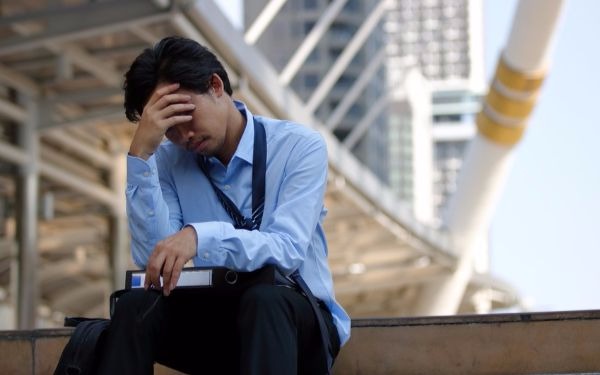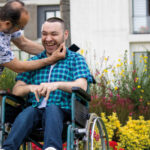
The latest government statistics on the average caseload for a children’s social worker has put the national average at 17.4.
The Department for Education, which published the statistics, urged caution when interpreting the figures due to some local authorities reporting difficulties with linking individual social workers to the cases.
The overall average is calculated by dividing the number of cases by full-time equivalent social workers who hold more than one case.
At a more local level, the picture is a varied one, with caseloads as low as 12 reported in Kingston and Richmond upon Thames, but a caseload of near 27 in North East Lincolnshire. Interestingly, there doesn’t appear to be a link between a local authority being rated ‘inadequate’ by Ofsted and high caseloads, as the top five local authorities indicate. However, high performance was a theme of those with low caseloads, with the five lowest caseload authorities being rated ‘good’ or ‘outstanding’ by Ofsted.
While two of the local authorities with the highest caseloads were rated ‘good’, three were rated ‘requires improvement’.
The Department for Education statistics were in contrast to figures obtained by Community Care in a survey of children’s social workers last year, which found a median average of 25.
Lowest average caseloads
| Local authority | Average caseload | Latest Ofsted rating |
| Kingston upon Thames* | 12.0 | Good |
| Kensington and Chelsea | 12.6 | Outstanding |
| Westminster | 12.7 | Outstanding |
| Hertfordshire | 12.8 | Outstanding |
| Hammersmith and Fulham | 12.9 | Good |
*This is the same for Richmond Upon Thames, as both councils are run by the Community Interest Company Achieving for Children.
Highest average caseloads
| Local authority | Average caseload | Latest Ofsted rating |
| Cheshire East | 22.6 | Requires Improvement |
| Calderdale | 22.7 | Good |
| Luton | 23.9 | Requires Improvement |
| Sefton | 25.0 | Requires Improvement |
| North East Lincolnshire | 26.8 | Good |




 Bournemouth, Christchurch and Poole
Bournemouth, Christchurch and Poole  Hampshire County Council
Hampshire County Council  Oxfordshire County Council
Oxfordshire County Council  South Gloucestershire Council
South Gloucestershire Council  Wokingham Borough Council
Wokingham Borough Council  Providing a lifeline for social workers who want to get back into the sector
Providing a lifeline for social workers who want to get back into the sector  The highs and lows of a children’s services’ transformation journey
The highs and lows of a children’s services’ transformation journey  Embedding learning in social work teams through a multi-agency approach
Embedding learning in social work teams through a multi-agency approach  The family safeguarding approach: 5 years on
The family safeguarding approach: 5 years on  Harnessing social work values to shape your career pathway
Harnessing social work values to shape your career pathway  Workforce Insights – showcasing a selection of the sector’s top recruiters
Workforce Insights – showcasing a selection of the sector’s top recruiters  Join our team to help technology enabled care transform lives in Nottinghamshire
Join our team to help technology enabled care transform lives in Nottinghamshire  Free CPD on Parkinson’s for health and social care staff
Free CPD on Parkinson’s for health and social care staff 

 Facebook
Facebook X
X LinkedIn
LinkedIn Instagram
Instagram
I have never worked in a local authority where caseloads are below 20. Not sure in who is providing the information for the data but is does not reflect the national picture accurately. Currently I work within a local authority where a caseload between 30 and 45 is the norm. The ofsted rating certainly isn’t good.
Not to be unkind, but I am pretty sure the Department of Education is more accurate than your personal experience. It is a shame that you have had a caseload of 20+ that shouldn’t be the norm.
I have worked with eied all over and it is the Norm. 50 was avg in Glasgow. You are nieve if you think the right statistics will be given out
I think you are being unkind and naive to the social worker who has advised that they have never had a caseload of less than 20. I worked extensively over a number of years in a lot of local authorities. I also very rarely had a caseload of less than 26 plus.
One authority informed me that with the changes they were about to make that i would have to hold a caseload of over 40 plus. My professional integrity told me that it was impossible to work effectively with that number of children on my caseload and I opted to leave.
Caseloads of 25plus and more are then norm and the DoE will no doubt have some formula of calculating caseloads which is not reflective of the true picture. Interesting that again social work caseloads are being calculated by a department of education
I have been a social worker for 11 years and my caseload has always been between 24 and 44…across 18 different local authorities from Plymouth to Cumbria…from assessment teams,CWD teams,Child protection and court teams and generic teams…below 20 is a dream that would enable me to give my best…instead of chasing my tail.
Why do you assume that the department for education results are accurate? The best people to tell anyone about caseloads are the people who work them. Count yourself fortunate to have never encountered more than 20 cases.
Totally agree and have all over. Never seen a caseload below 35. Of course the information won’t be accurate.
They calculate the caseload by deciding the number of active cases between the number of qualified sw in the department. This includes senior managers, team managers and advanced pracs who in reality to do not case hold. It also doesn’t account for people not at work due to illness or sw based in the yot. This unfortunately affects the statistics making caseloads appear lower
Quite clearly there is a negative co-relation between High caseload and performance quality.
It would be interesting to see if the local authorities where the case loads are high have a higher sickness level than the local authorities with the lower case loads
It’s not rocket science. Of course there is.
Sickness, performance and effective intervention depends a great deal on the management/work culture.
If there is bullying, managers overly critical to protect themselves and unsupportive, the output will not be desirable regardless of the caseload numbers.
I work in a Local Authority where the caseload is stated to be 15 but actually hold a caseload that is nearly double that. When I challenged this I was told that the number of cases in the LA holds is divided by the number of social workers employed by the LA. It does NOT take into account whether the social workers are actually working! So those on long term sick, maternity leave etc are included as though they were working. With nearly a quarter of my colleagues off with stress there is no wonder that the workforce is overwhelmed and under supported.
Where I work caseloads of 25-30 are the norm and we are the lowest of the six authorities in our area. I think even the dfe are saying take the results cautiously
Once again the DoE are cooking the books. We have an “average” caseload of 18 yet in our particular area the majority of workers have caseloads above this number. Just as Thatcher massaged the unemployment figures I am afraid the Tories are up to their usual tricks hence the recent remarkable drops in rough sleeping!
I walked out this evening in our city centre to see close to 100 people queuing at a soup kitchen should that be the norm?